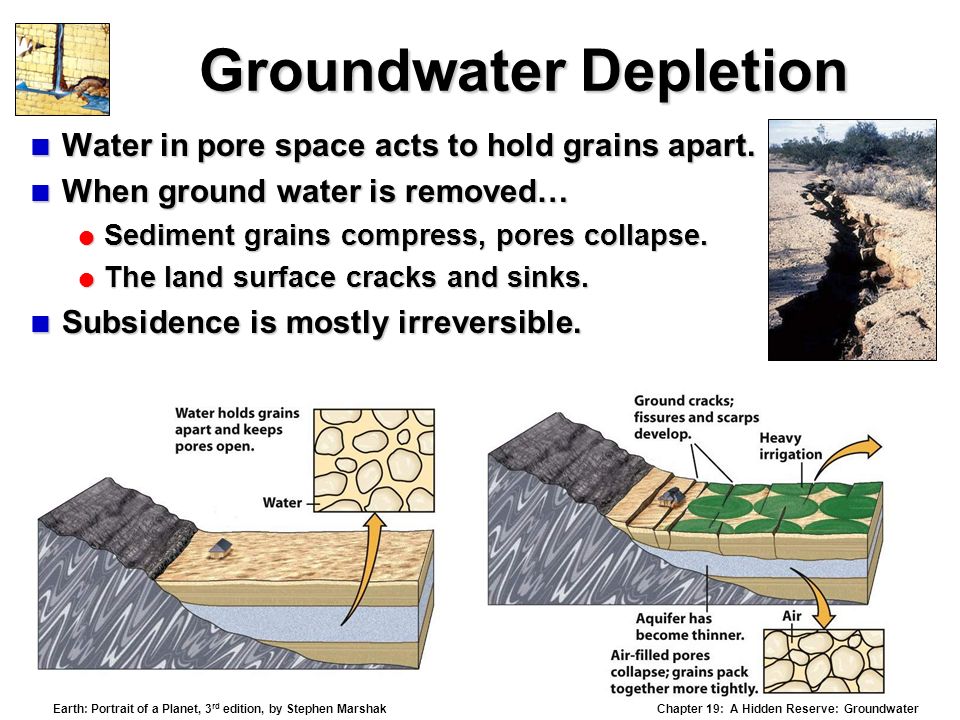What is Groundwater?
Groundwater is our oldest water bank stored in the belly of Mother Earth. Groundwater normally flows underground in the spacecracks and spaces in soil, sand and rock. It is stored in and moves slowly through geologic formations of soil, sand and rocks called aquifers.

How Much Do We Depend On Groundwater?
- Groundwater supplies drinking water for most of India’s habitats.
- 90% of groundwater is used for irrigation to grow crops.
- Groundwater is an important component in many industrial processes.
What is Groundwater Depletion?
Groundwater depletion is a serious threat to the environment. The majority of our bodies and the Earth is made up of water. We may see the beautiful, flowing surface waters that make up the oceans, lakes and rivers, but this water is not always safe for consumption and is much more difficult to filter than groundwater. Consequently, water from the ground is especially valuable.
Groundwater is something that we need all over the world. Humans and animals need water in order to survive as our bodies could not function without it. We also need water to assist us in growing crops, powering equipment, and to keep us comfortable. Societies require much more clean water than we are afforded from precipitation and surface water, which is why groundwater is used so frequently.
If you were to see groundwater moving, you’ll likely find it interesting that so much water lies beneath us. From a bird’s eye view, you may even feel that there is more than enough water to go around. While we know that groundwater shortage is a serious issue, we should also know how water naturally finds its way into the aquifers we extract it from.
Nature goes through a unique process to provide us with groundwater. The surface water that we can see is heated by the Sun and goes into the atmosphere as evaporation. Water vapor then creates precipitation, water that falls from the sky as rain and snow. Once water falls from sky and onto the ground, it is absorbed into the Earth, and flows to rivers, lakes and ocean. Groundwater also is recharged with this rainwater flowing from roof or surface.

Causes of Groundwater Depletion:
- Frequent Pumping of ground water from aquifer:
We pump the water more quickly than it can renew itself, leading to a dangerous shortage in the groundwater supply. As a growing world with a population that continues to rise, the more we pump water from the ground at a rapid rate, the more difficult it is for the groundwater to provide us with the amount of water that we need.
- Continuously pumping of groundwater from aquifer:
Water flows freely through the saturated rocks known as aquifers. There are large and small aquifers, and they are the underground water reserves that absorb water and hold it, enabling us to pump it for use.
The amount of water that aquifers hold is beyond impressive and can provide us with billions of gallons of water per day. While this amount of water seems plentiful, groundwater is a major contributor to the Earth’s freshwater supply and is responsible for providing up to 40% of freshwater in the world. Therefore, it doesn’t have the ability to replenish quickly enough to be continually sourced for our use.
- Agricultural needs require a large amount of groundwater.
It’s frightening to think that there isn’t very much groundwater left when you consider how much water we use on a daily basis to support our population of billions and our personal lifestyles. A large amount of groundwater goes to farming, but the availability of groundwater is steadily declining.
Without it, it will be extremely difficult to provide drinking water and water for crops and animals that would help communities during times of drought. The less water that is available, the less food we have and we will be faced with the issue of great demand and very little supply.
- Pressure imbalance between groundwater and sea water.
The problems we would face with freshwater shortage is sure to cause problems in every aspect of our lives. The activities that lead to groundwater depletion come mostly from humans, but a portion of it also comes from changes in our climate and can speed up the process.
Ground water is the primary source for drinking water and irrigation, in India and from last few years due to population burst across the nation there is a sharp decline in the ground water level (availability). There is a constant pressure balance among the ground water and sea water level so that contaminated water can’t seep into and due to lowering level there is an alarming situation for water contamination across India.
5. Absence of practices to deposit rainwater back to aquifer:
Over past 100 years, the consumption of ground water has increased by more than 500 % resulting in fresh water scarcity. It is estimated that by 2025 two third of population will live in water stressed areas. Rainwater has always been around and is a basic source of water owing to its availability however still, about 54 percent of the population faces shortage of water and this issue is unsolved in many parts of the country. We have not been able to adopt local practice to deposit rainwater from our roof or surface, the local deposit against the withdrawal will help us to raise ground water level and bring back balance to avoid ingress of salinity from Sea. Any construction activity must have suitable facility to deposit rainwater before they drill bore well to extract ground water. Mass adoption of such local practices will address twin problems of groundwater depletion of groundwater quality deterioration.

Let’s transform India from water stressed to water positive Nation!
Vardhman Envirotech.
India’s Passionate Rainwater Company.
